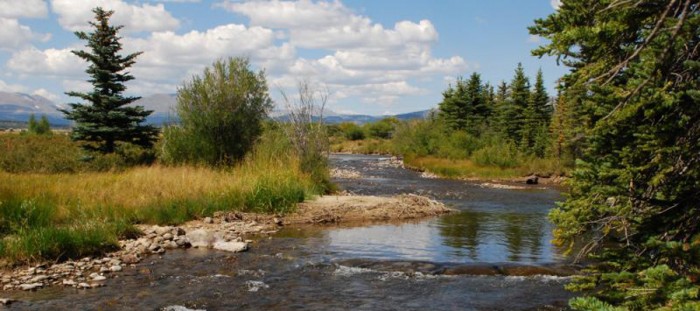Poor land stewardship on this central Colorado ranch left the new land owner with multiple areas of severely eroded stream bank. Riparian cattle grazing decreased habitat complexity both instream as well as along the riparian corridor. Degraded stream banks and a loss of habitat biodiversity resulted in excessive sediment loads, decreased spawning habitat, lack of instream structure and an overall deficiency in aquatic and terrestrial production. Additionally, a previous restoration attempt left over 200 large boulders in stream and plugged numerous side channels.
Trout Headwaters Inc., after a thorough assessment, developed a stream design that would address and combat these problems. THI’s stream design improved bank stability, instream habitat and water quality while creating naturally functioning channel characteristics. The construction of bioengineered “soft” banks, specifically suited to the sites hydrologic and geomorphic conditions were implemented to achieve THI’s project goals.
Bioengineering methods used on this project include:
– Erosion control blanket (used with native seed blend)
– Turf Reinforcement Material (used with native seed blend)
– Dormant willow fascines
– Commercial wetland plants
– Dormant willow posts
The use of bioengineered banks is an innovative solution used for resisting and preventing the effects of erosion, flooding, trampling as well as other forms of streamside degradation. Areas particularly suited to bioengineering include those with a good potential to quickly establish streamside vegetation and those subject to lower erosive forces during spring runoff events.
A carefully selected native seed blend along with containerized plants, consisting of species specifically selected for their adaptability to the project site are used following the bioengineering techniques. Prompt establishment of native vegetation increases soil stability, increases biodiversity and adds shade and cover while providing ideal habitat for aquatic and terrestrial species. The use of bioengineering techniques for stream restoration is a concept that provides stable and self-maintaining results for years to come.
Copyright 2010 – Michael Sprague, president and founder of Trout Headwaters, Inc.

